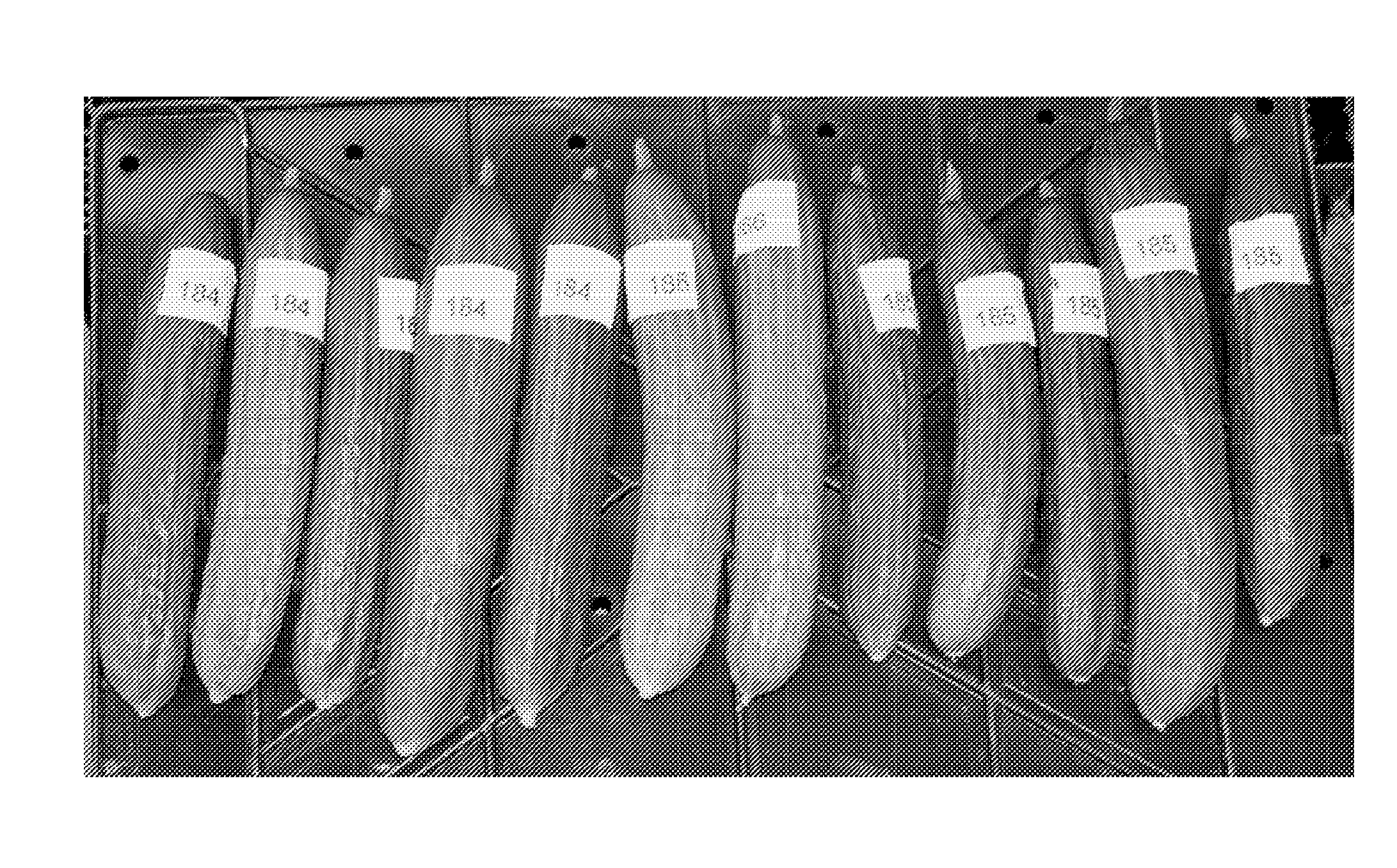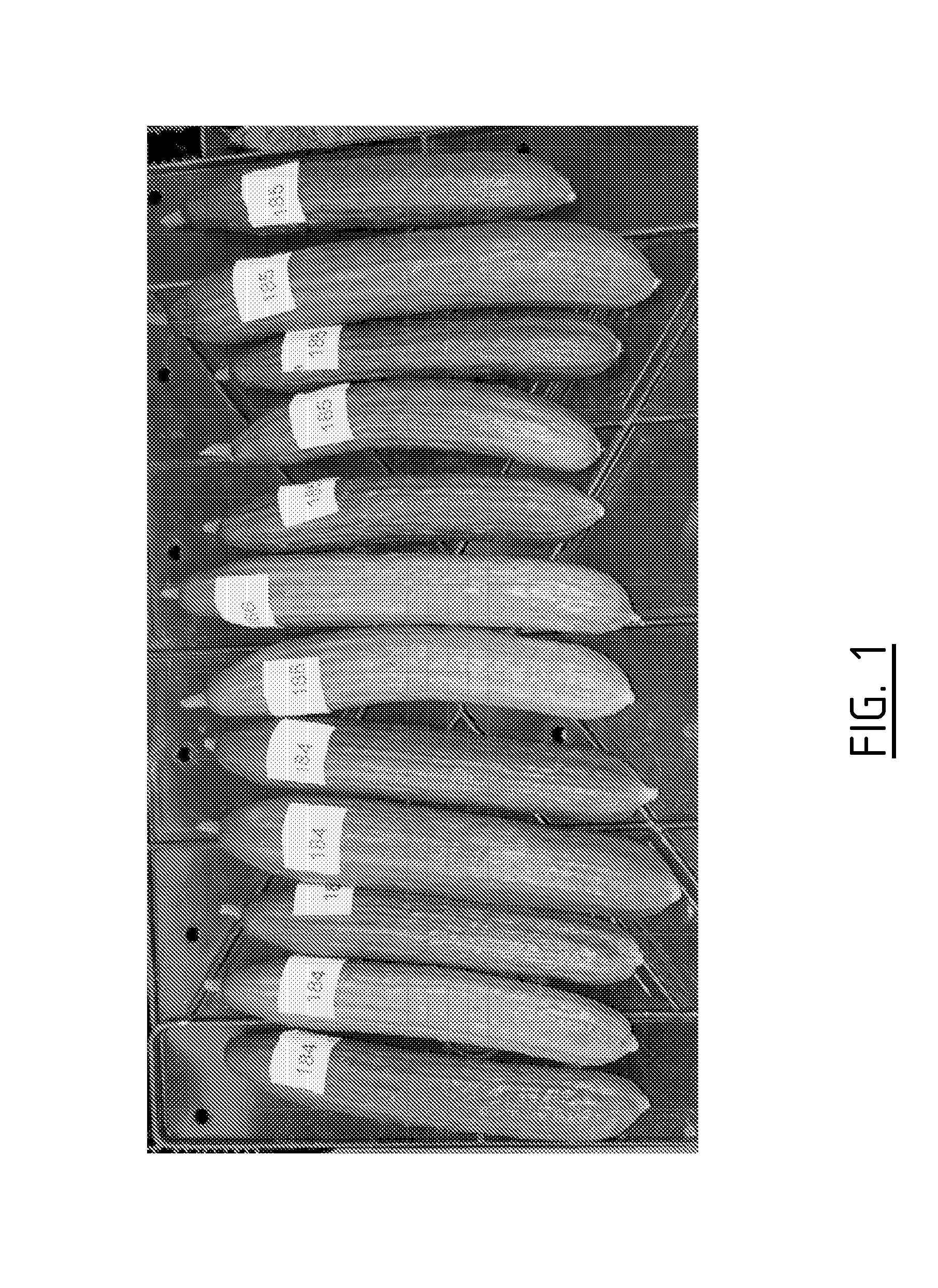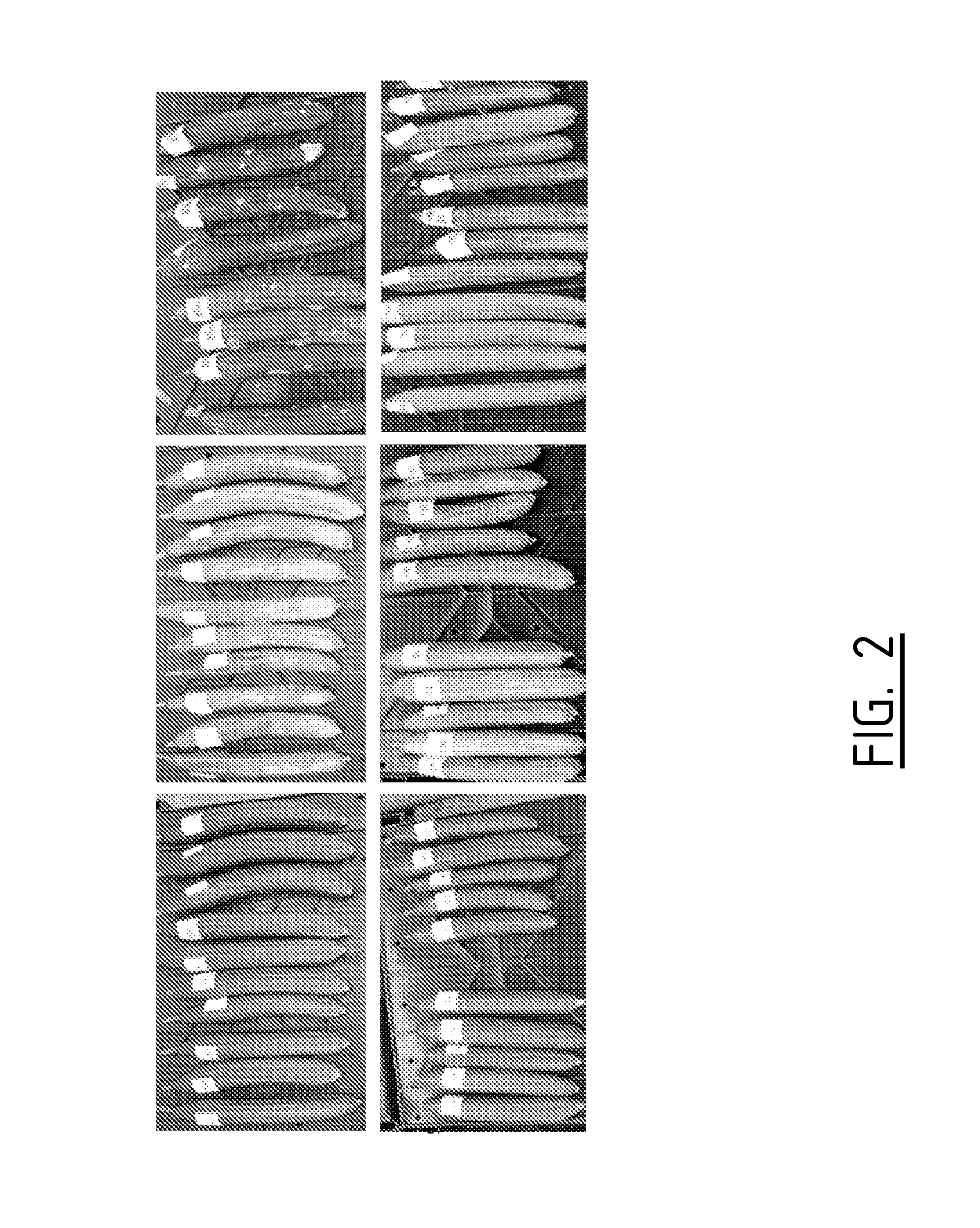Resistance to post harvest deterioration in cucumber
- Summary
- Abstract
- Description
- Claims
- Application Information
AI Technical Summary
Benefits of technology
Problems solved by technology
Method used
Image
Examples
example 1
Genetic Modification of Cucumber by Ethyl Methane Sulfonate (ems)
[0079]Seeds (M0) of the cucumber breeding line BF11 were treated with ems by submergence of approximately 5000 seeds into an aerated solution of 0.07% (w / v) ems during 24 hours at room temperature.
[0080]The treated M1 seeds were germinated and the resulting M1 plants were grown and self-pollinated in a greenhouse to produce M2 seeds.
[0081]After maturation, M2 seeds were harvested and bulked in one pool. The resulting pool of M2 seeds was used as starting material to identify the individual M2 plants that show reduced sensitivity to ethylene.
[0082]The efficacy of the genetic modification procedure was assessed by determining the occurrence of bleached plants, which is indicative for chlorophyll loss due to modifications in genes directly or indirectly involved in the formation or accumulation of chlorophyll.
example 2
Identification of Cucumber Plants which have Obtained Reduced Sensitivity to Ethylene
[0083]M2 cucumber seeds were germinated on paper in a small plastic container with an ethylene concentration of 10-20 vpm (volume parts per million) at 21° C. in the dark. 1 Vpm contains 0.41 μmol / litre or 1.14 μg / litre. Ethylene-insensitive mutants were compared to ethylene-sensitive controls, and selected on the basis of an elongated hypocotyl when grown in darkness.
[0084]The ethylene-insensitive mutants which were obtained were grown in a greenhouse in order to produce M3-lines by self-fertilisation. In total 31 M3-lines were analysed with the seedling-test to confirm the ethylene insensitivity. When on average the emerged seedlings had produced a longer hypocotyl the event was qualified as being ethylene insensitive. In total 27 out of 31 events were given this qualification. When a line was segregating for ethylene-insensitivity, plants were selected and after an additional cycle of inbreeding ...
example 3
Identification of Ethylene Insensitive Cucumber Plants which have Obtained Reduced Post Harvest Deterioration with Respect to Fruit Yellowing and Fruit Firmness
[0087]A number of confirmed ethylene insensitive events (at the level of seedling etiolation response in air containing ethylene) which were not changed with respect to sex-expression were evaluated for fruit shelf life when exposed to ethylene. Per event 5-8 fruits were collected and incubated at 21° C. in darkness under an atmosphere containing 5 ppm ethylene.
[0088]After 8 days, the negative control line BF11 (which represents the genetic background of each of the mutants) turned from green to almost completely yellow as expected. The ethylene insensitive mutants also changed colour but the fruits were less yellow as compared to the control fruits (FIG. 1).
[0089]A similar result was obtained when the fruits were compared during a shelf life experiment in air. The shelf life was thus found to be enhanced under different stor...
PUM
 Login to View More
Login to View More Abstract
Description
Claims
Application Information
 Login to View More
Login to View More - R&D
- Intellectual Property
- Life Sciences
- Materials
- Tech Scout
- Unparalleled Data Quality
- Higher Quality Content
- 60% Fewer Hallucinations
Browse by: Latest US Patents, China's latest patents, Technical Efficacy Thesaurus, Application Domain, Technology Topic, Popular Technical Reports.
© 2025 PatSnap. All rights reserved.Legal|Privacy policy|Modern Slavery Act Transparency Statement|Sitemap|About US| Contact US: help@patsnap.com



